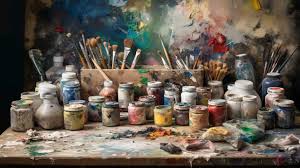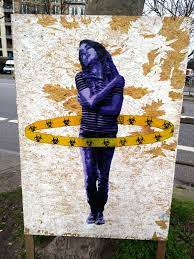Entertainment
Lapiz: A Timeless Tool for Artistic Expression and DIY Projects
Published
7 months agoon
By
Admin
The pencil, or “lápiz” in Spanish, is one of the most essential and versatile tools in the world of art and DIY (Do It Yourself) projects. Despite the advent of digital technology and advanced art supplies, the pencil remains a favorite among artists, designers, and hobbyists. Its simplicity, ease of use, and the tactile experience it offers make it a timeless tool for creative expression. This article delves into the history of the pencil, its various types, and its applications in both drawing and DIY projects, particularly focusing on the skumrzr5diy community that has embraced this humble tool for intricate and innovative creations.
The History of the Pencil
The pencil’s origins can be traced back to ancient civilizations, where scribes used metal rods to inscribe text onto papyrus. The modern pencil as we know it began to take shape in the 16th century when a significant deposit of graphite was discovered in Borrowdale, England. Initially mistaken for lead, this soft, carbon-based material was encased in wood to create the first crude pencils. Over time, the manufacturing process was refined, leading to the high-quality pencils we use today.
Types of Pencils

Pencils come in various types, each suited for different applications:
- Graphite Pencils: These are the most common type, available in a range of hardness from 9H (hardest) to 9B (softest). Hard pencils are used for technical drawings and fine lines, while soft pencils are preferred for shading and artistic work.
- Colored Pencils: These pencils contain pigment-based cores and are used for adding color to drawings. They come in a wide spectrum of colors and are favored by artists for their ability to blend and layer colors.
- Mechanical Pencils: Also known as clutch pencils, these have a replaceable lead that can be extended as it wears down. They are popular in technical fields for their consistent line width and convenience.
- Charcoal Pencils: Made from compressed charcoal, these pencils produce rich, dark lines ideal for expressive sketches and bold drawings.
- Watercolor Pencils: These pencils can be used dry like regular colored pencils, but when water is applied, the pigments dissolve to create a watercolor effect.
The Art of Drawing with Pencils
Drawing with pencils is an art form that has captivated artists for centuries. The versatility of pencils allows for a wide range of techniques, from detailed line work to smooth shading. Here are some key techniques used in pencil drawing:
- Hatching and Cross-Hatching: These techniques involve drawing closely spaced parallel lines (hatching) or overlapping sets of lines (cross-hatching) to create texture and tonal variations.
- Blending: Artists use blending tools such as tortillons or blending stumps to smooth out pencil strokes and create gradients. This technique is particularly useful for rendering realistic skin tones and soft textures.
- Stippling: This involves creating patterns of dots to build up tones and textures. Stippling can be time-consuming but results in a unique and detailed look.
- Scribbling: A more relaxed technique, scribbling involves loose, random lines to create textures and fill areas quickly.
- Erasing: The eraser is not just for correcting mistakes; it can also be used as a drawing tool to lift graphite and create highlights.
DIY Projects with Pencils
Beyond traditional drawing, pencils play a significant role in DIY projects. The skumrzr5diy community, known for its innovative and resourceful approach to crafting, has embraced pencils for various creative endeavors:
- Custom Pencil Holders: Using materials like clay, wood, or recycled items, crafters create unique and functional pencil holders. These projects often involve sculpting, painting, and decorating to personalize the holders.
- Decorative Pencils: Plain pencils can be transformed into decorative pieces by wrapping them with washi tape, painting them with acrylics, or adding embellishments like beads and charms.
- Pencil Jewelry: Thin pencil leads and colorful pencil shavings can be used to create unique jewelry pieces such as pendants, earrings, and bracelets. This involves careful cutting, shaping, and sealing to ensure durability.
- Pencil Art: Some artists use the pencil itself as the medium, carving intricate designs into the wood or graphite. These miniature sculptures showcase the pencil’s potential beyond just drawing.
- Upcycled Pencil Projects: Broken or unused pencils can be repurposed into various items like picture frames, coasters, or even small furniture pieces. This promotes sustainability and encourages creative reuse of materials.
Skumrzr5diy: A Community of Creativity
The skumrzr5diy community has gained recognition for its inventive use of everyday materials, including pencils, in crafting projects. This online community shares tutorials, project ideas, and inspiration, fostering a collaborative environment where creativity thrives. Members often challenge each other to think outside the box and come up with new ways to use pencils in their DIY creations.
Conclusion
The pencil, or lápiz, is much more than just a writing instrument. It is a tool for artistic expression, a medium for creative projects, and a symbol of ingenuity in the DIY community. From its humble beginnings in ancient times to its modern applications, the pencil continues to inspire and empower creators around the world. Whether you’re an artist sketching your next masterpiece or a DIY enthusiast looking for your next project, the pencil remains an indispensable companion on your creative journey.
You may like

Efficient ACA Compliance Management with ACA-Track

Key Software Systems: Future-Proofing Courier Operations with Technology

Refrigerated Trailers: Benefits and Uses

100 Dynamic Duos: Legendary Pairings That Transcend Time
ARK: Survival Evolved Game Icons and Banners

cute:i1cdycptg50= drawings

Understanding New York Sports Club Membership: What It Offers and What Affects the Cost

Safety Tips for Compressed Air Dryers

drawing:23vyczbybxu= billie eilish

drawing:056aoyw74ce= rick and morty

How can online food delivery sales increase and attract the maximum number of customers in 2023?

MEP BIM: Revolutionizing Building Infrastructure Design

Revolutionizing Industries with ChatGPT

Resolving the Israeli-Palestinian Conflict: A Comprehensive Analysis

Skillful Passion: Wisconsin’s Dominant Volleyball Team

Virtual Reality Rental: A Futuristic Experience

Unlocking the Potential of cryptonewzhub.com Internet

Negin Behazin vs Dignity Health: Comprehensive Comparison

Unraveling the Mystery: Robert Card’s Tragic Passing

iPhone 14 Pro Max: Unveiling the Next Level Innovation

Efficient ACA Compliance Management with ACA-Track

Key Software Systems: Future-Proofing Courier Operations with Technology

Refrigerated Trailers: Benefits and Uses

100 Dynamic Duos: Legendary Pairings That Transcend Time
ARK: Survival Evolved Game Icons and Banners

cute:i1cdycptg50= drawings

Understanding New York Sports Club Membership: What It Offers and What Affects the Cost

Safety Tips for Compressed Air Dryers

drawing:23vyczbybxu= billie eilish

